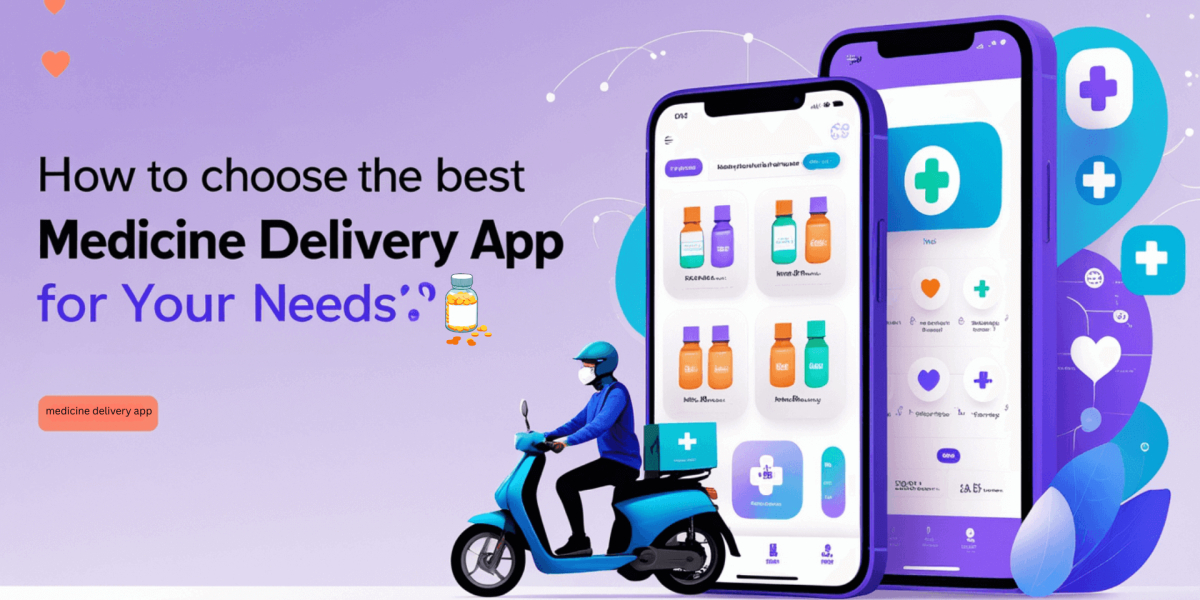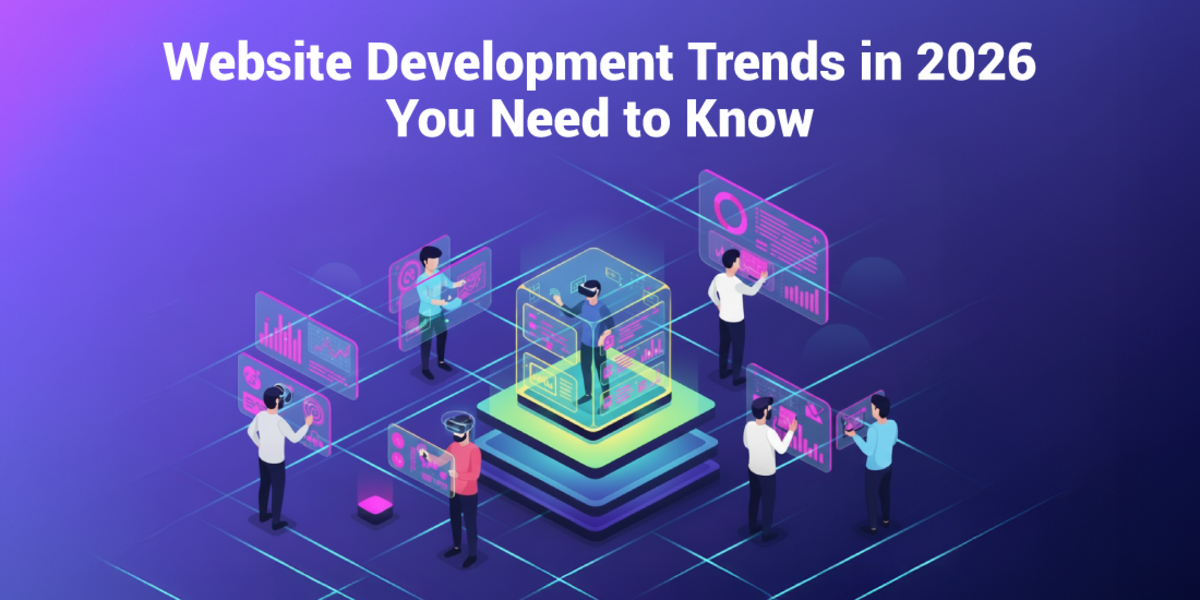What's the Difference Between SEO and SEM, and Which One Should You Choose?
- By Shriya Patel
- 20-12-2023
- Digital Marketing
.png)
Search Engine Optimization (SEO) and Search Engine Marketing (SEM) are both strategies to increase the level of a website on search engines, but they invove different approaches.
Search Engine Optimization:
SEO is the practice of optimizing a website to rank higher in organic (non-paid) search engine results. The goal is to increase the visibility and quality of traffic to a website from search engines.
Key Components:
On-Page SEO:
- Content Optimization: On-page SEO starts with high-quality, relevant content. It is important to produce well-researched, informative, and engaging content. It should also seamlessly integrate targeted keywords.
- HTML Tags: Proper use of HTML tags, such as title tags, meta descriptions, header tags (H1, H2, etc.), and alt attributes for images, is crucial. These tags offer context to search engines regarding the content present on a page.
- Keyword Usage: Putting important words in the right places in your content helps search engines figure out if a webpage is relevant to what users are searching for.
- Internal Linking: Linking relevant pages within your own site helps distribute link equity and guides users to related content. It also improves the site's overall structure.
Off-Page SEO:
Backlinks: The quality and quantity of backlinks from reputable websites play a significant role in off-page SEO. This kind of link suggests that search engines find your content valuable, treating it as a vote of confidence.
Social Media Signals: While not a direct ranking factor, social media signals (likes, shares, and comments) contribute to the visibility and popularity of a website. Active participation on social platforms can indirectly impact search rankings.
Brand Mentions: Even without a link, mentions of your brand across the web can contribute to your site's authority. Search engines may recognize these mentions and associate them with credibility.
Technical SEO:
- Site Speed: Pages that load quickly give users a better experience and are preferred by search engines. Elements such as image optimization, browser caching, and minimizing HTTP requests contribute to improved site speed.
- Mobile-Friendliness: Having a mobile-friendly website is crucial with the growing use of mobile devices. Search engines prioritize mobile-responsive sites to ensure a positive user experience for mobile users.
- Crawlability and Indexability: Search engines need to crawl and index your site effectively. Factors such as a clean URL structure, proper use of robots.txt, and a sitemap aid in efficient crawling and indexing.
- Structured Data Markup: When you use structured data markup, it helps search engines grasp the context of your content. This can lead to rich snippets in search results, providing more information to users.
Benefits:
- Increased Organic Traffic: SEO helps the website rank higher in even organic (non-paid) search results, attracting more clicks and traffic.
- Cost-Effectiveness: The initial investment in SEO can be great, but over the long run it is generally worth it.
- Credibility and Trust: To users, those pages that rise to the top of organic search results tend to look more credible and trustworthy.
- Improved User Experience: SEO means to improve the elements of a website, including content, structure, and navigation, so as to enhance the user experience.
- Long-Term Sustainability: Once a website has a solid organic foundation, it can hold its ground for a long time, giving the site a ready source of traffic.
- Better ROI: Compared to traditional advertising, SEO often offers a higher return on investment over the long term.
Search Engine Marketing:
SEM is a broader term that encompasses various strategies to promote websites by increasing their visibility in SERPs through paid advertising. The most common type of Search Engine Marketing (SEM) is Pay-Per-Click (PPC) advertising.
Key Components:
PPC Advertising:
1. Keyword Research:
Successful PPC campaigns begin with thorough keyword research. Advertisers identify relevant keywords that potential customers might use when searching for products or services. Tools like Google Keyword Planner help in this process.
2. Ad Auctions:
Advertisers bid on keywords in an auction-based system. The bid represents the most quantity they're inclined to pay for a click on on their ad. The ad auction considers bid amount, ad relevance, and expected click-through rate (CTR) to determine ad placement.
3. Ad Creatives:
Compelling ad creatives are crucial. Advertisers craft ad headlines, descriptions, and display URLs that entice users to click. Including unique selling propositions (USPs) and a clear call-to-action (CTA) enhances the effectiveness of the ads.
4. Ad Extensions:
PPC platforms allow the use of ad extensions to provide additional information to users. These may include site links, callout extensions, location extensions, and more. Ad extensions can improve ad visibility and provide more value to users.
5. Quality Score:
Platforms like Google Ads assign a Quality Score to each keyword based on factors like ad relevance, landing page experience, and expected CTR. Achieving a superior Quality Score can result in reduced costs per click (CPC) and improved advertisement placements.
Google Ads:
1. Campaign Types:
Google Ads provides a range of campaign types, encompassing Search Network, Display Network, Video, Shopping, and App campaigns. Each type serves different purposes, from showing text ads in search results to displaying image ads on websites across the internet.
2. Audience Targeting:
Advertisers can target specific audiences based on demographics, interests, and online behavior. A remarketing campaign helps advertisers to reinforce brand awareness by displaying ads to previous website visitors.
3. Conversion Tracking:
Google Ads provides conversion tracking tools, allowing advertisers to measure the effectiveness of their campaigns. Tracking actions such as form submissions, purchases, or phone calls helps in optimizing for desired outcomes.
4. Smart Bidding:
Google Ads uses machine learning for Smart Bidding, which automatically adjusts bids to maximize conversions or conversion value. This feature leverages historical data and real-time signals to optimize bidding strategies.
Bing Ads:
1. Network Reach:
Bing Ads allows advertisers to reach a substantial audience, especially those who use the Bing search engine. It also includes syndication with Yahoo search results, expanding the reach beyond Bing's platform.
2. Ad Formats:
Bing Ads supports various ad formats similar to Google Ads, including text ads, shopping ads, and image ads. Advertisers can tailor their campaigns to fit the preferences of their target audience.
3. Import from Google Ads:
Bing Ads provides the option to import campaigns directly from Google Ads, making it easier for advertisers to expand their reach across both platforms. However, adjustments may be needed to optimize for the nuances of each platform.
4. Audience Exclusions:
Advertisers can refine their audience targeting by excluding specific demographics or user characteristics. This helps in honing in on the most relevant audience for their products or services.
Benefits:
- Immediate Visibility: SEM, particularly PPC advertising, can generate immediate visibility for a website. Ads appear at the top of search results as soon as a campaign is launched.
- Precise Targeting: SEM allows advertisers to target specific demographics, locations, and user behaviors, ensuring that ads reach a highly relevant audience.
- Measurable Results: SEM platforms provide detailed analytics, allowing advertisers to track the performance of their campaigns, measure ROI, and make data-driven decisions.
- Control Over Ad Spend: Advertisers have control over their budget, bid strategy, and ad placements, providing flexibility in managing costs.
- Adaptability: SEM campaigns can be quickly adjusted based on performance data, allowing advertisers to refine strategies and optimize for better results.
- Brand Exposure: Paid search ads contribute to increased brand visibility, even if users don't click on the ads. This exposure can have a positive impact on brand recognition.
Key Differences Between SEO & SEM:
SEO (Search Engine Optimization):
Nature:
- SEO is the process of optimizing various elements of a website to enhance its visibility in organic (unpaid) search engine results.
- It involves making changes to the website's structure, content, and other on-page and off-page factors to align with search engine algorithms.
Focus:
- Keyword Optimization: Identifying and optimizing content for relevant keywords that users might enter into search engines.
- Content Quality: Creating high-quality, relevant, and valuable content that addresses user queries and provides a positive user experience.
- Link Building: To improve a website's credibility and authority, it should acquire high-quality backlinks from reputable websites.
- On-Page Optimization: Optimizing meta tags, headings, images, and other on-page elements to make the content more search engine-friendly.
- User Experience: Ensuring a positive user experience through a well-designed and easily navigable website.
Cost:
While there may be costs associated with hiring SEO professionals or using tools for keyword research and analytics, the primary focus is on organic methods.
Costs are generally related to time and resources invested in optimization efforts rather than direct payments for search engine placement.
Timeframe:
SEO can take some time to become noticeable, as it is a long-term strategy.
It requires continuous effort to adapt to changes in search engine algorithms, monitor performance, and refine strategies.
SEM (Search Engine Marketing):
Nature:
- SEM is a broader digital marketing strategy that encompasses various methods to increase a website's visibility through paid advertising on search engines.
- It includes strategies beyond organic methods, utilizing paid advertising to achieve immediate visibility.
Focus:
- Paid Advertising: Using platforms like Google Ads to create and manage paid advertising campaigns.
- Keyword Bidding: Advertisers bid on specific keywords, and ads are displayed in the sponsored section of search results when users search for those terms.
- Ad Creatives: Crafting compelling ad copies and creatives to attract clicks and engagement.
- Landing Page Optimization: Ensuring that the landing pages to which the ads direct users are relevant and optimized for conversions.
Cost:
- Advertisers pay for each click (PPC - Pay-Per-Click) or impressions (CPM - Cost Per Mille) depending on the chosen advertising model.
- The cost can vary based on the competitiveness of keywords and the effectiveness of the ad campaign.
Timeframe:
- SEM can provide immediate results, as ads can be displayed as soon as the campaign is set up and activated.
- However, continuous management and optimization are necessary to improve campaign performance over time.
Industries Where SEO Excels:
Content-Driven Industries:
- Examples: Publishing, blogging, news websites, educational platforms.
- Reasoning: SEO is particularly powerful in industries where content plays a crucial role. Search engines reward fresh, high-quality, and relevant content. Content-driven industries can capitalize on creating valuable resources that not only attract organic traffic but also contribute to building long-term authority in their niche.
Local Businesses:
- Examples: Restaurants, medical clinics, retail stores, local services.
- Reasoning: Local SEO optimization is pivotal for businesses targeting a specific geographic area. Optimizing for local search terms, creating Google My Business profiles, and obtaining positive local reviews help these businesses appear prominently in local search results, attracting nearby customers.
Medical and healthcare services:
Examples: Hospitals, clinics, individual practitioners.
Reasoning: People often turn to search engines for health-related information. Medical services can benefit from creating informative and authoritative content, answering common health queries, and ensuring their online presence aligns with SEO best practices to attract patients seeking trustworthy information.
Industries Where SEM Excels:
E-commerce:
- Examples: Online retail stores, and marketplaces.
- Reasoning: SEM, especially through paid advertising channels like Google Shopping, allows e-commerce businesses to showcase specific products to potential customers actively searching for them. The immediate visibility and targeting options make SEM a powerful tool for driving quick sales and promoting specific product lines.
Event Management:
- Examples: Concerts, conferences, festivals.
- Reasoning: Events have a finite timeframe, and organizers often need to generate awareness and ticket sales quickly. SEM's ability to target specific demographics and locations through paid campaigns enables event managers to reach a relevant audience swiftly, boosting attendance and ticket sales.
Tech and Software Products:
- Examples: Software as a Service (SaaS) providers, tech startups.
- Reasoning: The tech industry is highly competitive, and companies often want immediate visibility for new product launches or updates. SEM allows tech businesses to target keywords related to their products, ensuring their offerings appear prominently in search results when potential users are actively searching for solutions.
Professional Services:
Examples: Legal services, consulting firms.
Reasoning: Professional service providers can benefit from the precise targeting capabilities of SEM. By bidding on relevant keywords, these businesses can ensure their services are visible to individuals actively seeking legal or consulting assistance, leading to potential client conversions.
Which One Should You Choose?
The choice between SEO and SEM depends on various factors, including your specific goals, budget, timeline, and the nature of your business. Here are considerations for each:
Choose SEO If:
- Long-Term Strategy: If you're looking for sustainable, long-term results and are willing to invest time in building your organic presence, SEO is a suitable choice. It takes time to see significant results, but the benefits can be enduring.
- Limited Budget for Advertising: SEO has ongoing costs, but they are generally lower than the direct payments associated with SEM. If you have budget constraints and are willing to wait for results, SEO might be a more cost-effective option.
- Content Quality Focus: If your strategy involves creating high-quality, valuable content that addresses user needs, SEO is essential. SEO aligns with content marketing efforts, emphasizing the importance of relevant and engaging content.
- Building Credibility and Trust: If establishing credibility and trust over time is a priority for your business, SEO is crucial. Organic search results often contribute to a positive perception of trustworthiness.
- Patient for Results: SEO is not a quick fix; it requires patience. If you can wait for results and are committed to a long-term strategy, SEO is the way to go.
Choose SEM If:
- Immediate Visibility is Crucial: If you need instant visibility and want to appear at the top of search results immediately, especially for time-sensitive promotions or events, SEM, particularly PPC advertising, is the better choice.
- Flexible Budget: If you have a more flexible budget and are willing to pay for immediate results, SEM allows you to control your spending and adjust strategies based on performance.
- Testing and Optimization: If you want to quickly test different keywords, ad copies, and strategies to understand what works best, SEM provides a faster feedback loop for optimization.
- Targeted Advertising: If precise targeting of specific demographics, locations, and user behaviors is crucial for your marketing strategy, SEM platforms offer advanced targeting options.
- Adapting to Changes: If your business operates in a dynamic environment and you need the flexibility to adapt quickly to changes in the market or your offerings, SEM allows for rapid adjustments.
Conclusion:
So, in the end, it really depends on what you need for your business. If you want long-lasting results and are willing to take your time, SEO is the way to go. It's like planting seeds and watching them grow over time. It might take a while, but the benefits stick around for a long time.
On the other hand, if you need quick visibility, like showing up at the top of search results right away, then SEM, especially PPC advertising, is the better choice. It's like turning on a switch and getting instant attention, but you need to keep managing it to keep the spotlight on.
Think about your budget, how quickly you need results, and what suits your business style. Some businesses even use a bit of both strategies to get the best of both worlds. The important thing is to understand your goals and pick the strategy that fits them best.


.jpg)


